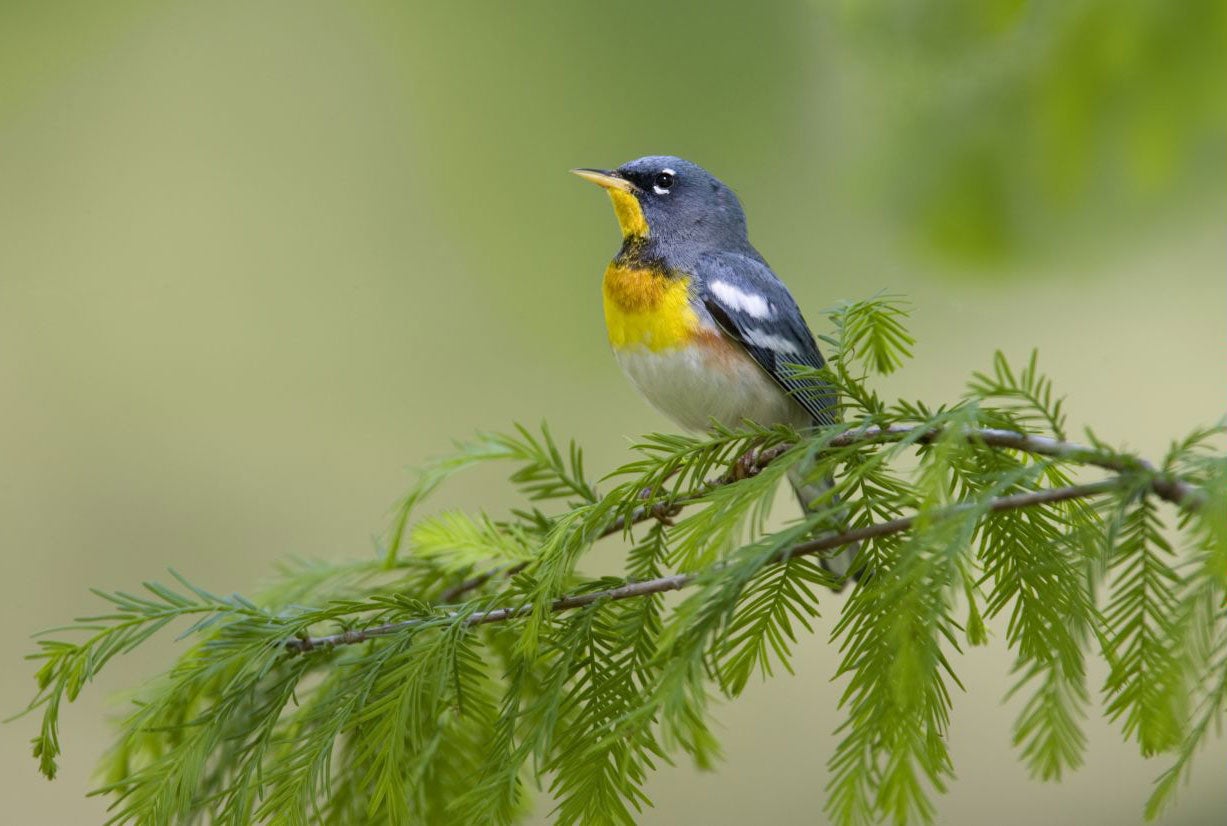Every cloud has a silver lining – although in this case its colours are blue, grey and yellow
Astonishingly, weather fronts from America also bring us birds

It may be of little consolation if you are stranded in a flooded farmhouse somewhere in Somerset, but there is a fascinating sidelight to be shed on the fierce Atlantic weather systems which over the last month have brought such sodden misery to much of Britain.
An indication of the enduring power of the depressions that move interminably towards us from the far side of the pond, and of their length and of their reach, is that they bring us more than gales and rainstorms. Astonishingly, they also bring us birds from America – indeed, they bring tiny American songbirds to Britain, across 3,000 miles of empty ocean.
It’s a most improbable occurrence, but its unexpected frequency is highlighted in a paper in the current edition of the journal British Birds, which looks at arrivals in Britain, over the past half-century and more, of American landbirds – that is, birds with terrestrial habits, as opposed to seabirds, wildfowl and waders, all of which are much more likely to make major sea crossings.
The vast majority of these landbirds are passerines, or small songbirds, and some are very small indeed, such as American warblers, which are unrelated to, and much more colourful than, our own group of warblers – most of those migrating to us every spring from sub-Saharan Africa where they have spent the winter.
That in itself is an epic journey for a tiny bird like a whitethroat or a willow warbler – it means crossing the 1,000-mile extent of the Sahara – but at least there are stopping places on the way north to Europe. To fly non-stop across the Atlantic is infinitely harder for an even smaller bird like the northern parula, a minuscule jewel of a warbler with a blue-grey head and a bright yellow throat; in fact it would seem virtually unbelievable.
Yet it happens. The British Birds paper by Tom Bond, a researcher in the engineering department of Imperial College London, reveals that between 1958 and 2012, 15 northern parulas were recorded in Britain. In total during that period there were 734 accepted records of North American landbirds, of 59 species, the vast majority arriving in September, October and November.
In their home range, many of these, like the warblers, are seasonal migrants between North America, where they breed, and Central and South America, where they spend the winter; some migrate over the sea, and occasionally they are caught up in Atlantic low-pressure systems with their strong westerly winds, and swept east to Britain instead of south to Venezuela and other such wintering grounds. The journey probably takes about 40 hours.
The red-eyed vireo is the commonest American bird to turn up (with 125 records) followed by the grey-cheeked thrush (52) and the blackpoll warbler (45). Over the years we have been blessed by the wind-assisted presence of 32 bobolinks, 24 American robins, 23 Baltimore orioles, and more than a dozen single visitors, of which the most celebrated is the golden-winged warbler which appeared in the car park of Tesco in Maidstone, Kent, in February 1989, and caused a birder sensation.
Maidstone is a big exception to the rule. Most American visitors arriving in Britain, the paper notes, turn up at the extremities of the kingdom, in the Western Isles and the Northern Isles of Scotland at one end, and in the Isles of Scilly, in particular, at the other. In fact, if you want to see US songbirds without crossing the pond, head for Scilly about the 9-10 October.
Paul Stancliffe of the British Trust for Ornithology was the official Bird Recorder on Scilly from 1999 to 2004 and fondly records the excitement and the sense of wonder that these transatlantic arrivals could provide. He saw 16 species of American landbirds in his time there, the northern parula included – he saw two of them – as well as 21 species of American waders, wildfowl and gulls.
“It’s just awesome to think that a bird like a parula, which is the size of a blue tit, and weighs less than a pound coin, can cross the Atlantic,” he said. “Every time I used to step out of the door in autumn on Scilly there was an acute sense of anticipation – at any moment, in any bush, an American landbird might pop its head out. I was always aware of that.
“It was a fabulous place to be, and if I had the choice, I would still be there. I remember seeing a chimney swift and a cliff swallow, which are both American species, flying in the same airspace from the bedroom window of my flat, which was absolutely incredible.”
Sadly it is unlikely that any of the American songbirds which get here can make it back, against the prevailing winds.
Tom Bond: “The occurrence and arrival routes of North American landbirds in Britain.” British Birds Vol 107, pp 66-82.
Join our commenting forum
Join thought-provoking conversations, follow other Independent readers and see their replies
Comments
Bookmark popover
Removed from bookmarks